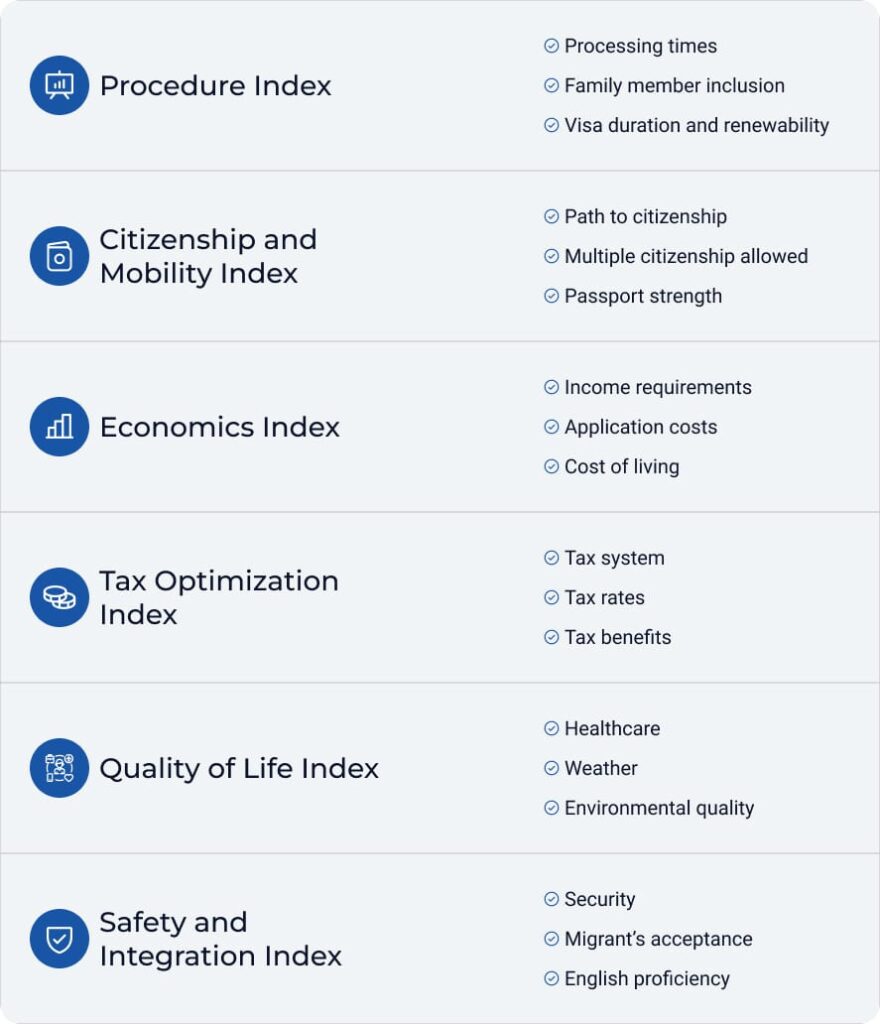Life expectancy has risen dramatically across the globe over the past several decades, reflecting significant improvements in health care, nutrition, and living conditions. According to United Nations data, people are not only living longer on average, but the gains in longevity have been widespread across regions and countries. Notably, a baby born in 2021 can expect to live, on average, more than 25 years longer than a baby born in 1950.
In an era of unprecedented mobility, retirement is no longer defined by national borders, it has become an international journey. The pursuit of a fulfilling, secure, and globally connected retirement is shaping new trends in migration and redefining what it means to age with dignity, purpose, and opportunity.
At Global Citizen Solutions, we are proud to introduce the Global Retirement Report 2025, a comprehensive benchmark study that brings clarity and direction to the evolving landscape of international retirement migration (IRM). Drawing from the most robust data available, this report evaluates 44 passive income and retirement visa programs across 44 countries, each offering unique possibilities for those ready to embark on their next chapter abroad.
Our analysis reveals that the retirement migration landscape is both dynamic and inclusive. The Americas and Europe together account for more than two-thirds of all programs, but the growing presence of attractive options in Asia and Africa signals a new era of choice and diversity for retirees worldwide. The rise in accessible, well-structured pathways for passive income visa holders is democratizing global retirement, making it an attainable reality not just for the few, but for a broad and varied community of retirees.
Key findings highlight a remarkable emphasis on quality of life, with over 70% of programs delivering above-average scores in healthcare, environmental quality, and overall well-being. As the desire for cross-border living grows, so does the importance of long-term security and integration: 93% of countries now offer clear paths to citizenship, and nearly all permit dual citizenship, ensuring that retirees can establish new roots while preserving their original identities. Family reunification remains central, with the vast majority of programs welcoming children and an increasing number embracing multi-generational living.
For high-net-worth individuals and those seeking to optimize their global financial strategy, the report confirms that 61% of countries offer tailored tax benefits for retirees. At the same time, 61% of all programs maintain low income requirements, and 68% offer affordable application costs, reinforcing the trend toward broader accessibility. Safety, social integration, and cultural openness are also well represented, with more than 60% of countries excelling in these areas.
This year’s ranking is led by Portugal, Mauritius, Spain, Uruguay, and Austria, countries that excel across our six sub-indexes and set the gold standard for international retirement migration.
On behalf of the entire team at Global Citizen Solutions, I invite you to explore the insights and opportunities presented in this report. Whether you are a retiree, a family member, an advisor, or a policymaker, the Global Retirement Report 2025 is designed to support well-informed decisions and inspire confidence as you navigate the exciting possibilities of international retirement.
Patricia Casaburi
CEO at Global Citizen Solutions
The Global Retirement Report 2025 delivers the most comprehensive, data-driven analysis of retirement migration pathways for passive income and retirement visa holders worldwide. Covering 44 passive income visa options across 44 countries, the report offers a multidimensional assessment of the most relevant destinations for retirees, using 20 targeted indicators grouped into six thematic sub-indexes: Procedure, Citizenship and Mobility, Economics, Taxes, Quality of Life, and Safety and Integration.
Key Findings
- Global Reach, Regional Leaders:
Passive income and retirement visa opportunities span every continent, but the Americas (36%) and Europe (32%) lead in program availability. Asia and Africa, though smaller in representation, still offer a range of attractive options, ensuring retirees have diverse pathways worldwide.
- Quality of Life as a Core Value:
Over 70% of programs (more than 30 out of 44 countries) offer above-average scores in healthcare, environmental quality, and overall living conditions, with Europe leading but strong showings from the Americas, Asia, and Africa as well.
- Pathways to Citizenship and Integration:
Approximately 93% of countries not only provide a clear path to citizenship but also allow dual citizenship, reflecting global momentum toward more inclusive migration policies for retirees. Half of the programs offer citizenship in five years or less, and 34% have a five-year pathway as standard.
- Family Reunification:
About 93% of programs allow retirees to bring their children, and 34% extend this right to parents or dependent parents, making family unity a defining feature. Less than 10% have unclear or restrictive policies.
- Tax Benefits and Optimization:
Around 61% of programs offer explicit, legally defined tax benefits for retirees, including flat tax rates and exemptions for foreign-sourced pensions. For high-net-worth individuals, 50% of countries use territorial or zero tax systems, and another 50% have no wealth or inheritance tax for new residents, creating optimal conditions for portfolio and legacy planning.
- Safety, Integration, and Accessibility:
More than 60% of countries score above average for safety and ease of integration, including migrant acceptance and English proficiency. European destinations are among the safest, with strong showings from the Americas and Africa as well.
- Financial Accessibility:
61% of programs require a monthly income of €2,000 or less, and 68% have application costs of €2,000 or less, ensuring that global retirement migration is not limited to the wealthy but is accessible to a broad range of retirees.
Regional Highlights
- Europeexcels in quality of life, healthcare, mobility, and family inclusion, with Southern Europe offering special tax regimes and Western Europe leading in healthcare quality.
- Americasare strongest for tax efficiency, cost of living, and fast-track permanent residency, with the Caribbean and Central America noted for immediate tax relief.
- Asiaoffers flexible entry, warm climates, and affordable living, while Africa stands out for simple taxation, integration, and multicultural environments.
Top 5 Countries
- Portugal
- Mauritius
- Spain
- Uruguay
- Austria
These countries scored highest across all dimensions, making them the most attractive global destinations for retirees in 2025.
The Global Retirement Report evaluates and ranks 44 countries worldwide that offer passive income visas or retirement residence permits, providing a comprehensive assessment of the best destinations for retirees seeking to live abroad. The analysis utilizes a total of 20 distinct indicators, systematically grouped into six sub-indexes and one final overall index designed to identify the optimal country for retirement.
By employing this structured and systematic approach, the Global Retirement Report delivers an objective, multi-dimensional evaluation of jurisdictions for retirement abroad. The methodology ensures all aspects crucial to retirees (from practical requirements to lifestyle and integration considerations) are incorporated, allowing for an informed and well-rounded decision-making process for those seeking the best place to retire globally.
Indicator Selection and Sub-Index Structure
Each of the 20 indicators was selected to capture a critical aspect of the retirement experience. Indicators are grouped into one overall and six core sub-indexes as follows:
Overall Index
The Overall Retirement Index was constructed as a composite measure, synthesizing the results from all six sub-indexes to deliver a balanced and multidimensional ranking of the best countries for retirement. Each sub-index was assigned a weight according to its relative importance to the retirement experience, ensuring that no single aspect disproportionately influences the final score. By integrating indicators related to procedure, citizenship and mobility, economics, taxes, quality of life, and safety and integration, the overall index provides a robust and objective comparison of retirement destinations, empowering retirees to make well-informed, holistic decisions about where to spend their next chapter abroad.
Sub Indexes

We welcome journalists and content creators to use insights from Global Citizen Solutions in your articles and publications. Please credit Global Citizen Solutions as the source and include a link to our website so readers can explore our research, data, and global mobility tools in more detail.
International retirement migration (IRM) has become an increasingly important phenomenon in the fields of migration studies, gerontology, and global economics over the last two decades. IRM refers to the movement of retirees across national borders, typically motivated by a combination of lifestyle aspirations, financial optimization, and social considerations. In their work, King, Warnes, and Williams provide a comprehensive analysis of British retirement migration to Mediterranean countries, highlighting that the primary motivations for these migrants include the pursuit of a warmer climate, improved lifestyle, and lower living costs. The typical migrants are middle-class retirees with sufficient pension income and a preference for coastal settlements where established expatriate communities offer familiar social networks and support. While many British retirees recreate social circles with fellow expatriates, integration into local societies tends to be limited, often hindered by language barriers and cultural differences. The study also emphasizes the challenges faced as these migrants age, particularly regarding access to healthcare and social services in foreign settings. Transnational mobility is common, with many maintaining strong ties to the UK and practicing seasonal or cyclical migration. The influx of British retirees has notable economic and social impacts on host communities, stimulating local economies but also contributing to the formation of expatriate enclaves.





